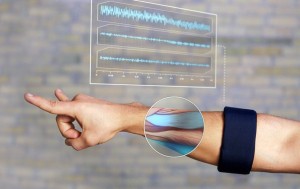 Gesture based control such as that provided by the LEAP are pretty cool, but this bracelet takes things a step further. This bracelet uses accelerometers to measure the motion of your arm, as well as devices to measure electrical impulses of your muscles, communicating this via bluetooth to provide gesture-based control of, well, anything. It can even recognize motion of individual fingers.
Gesture based control such as that provided by the LEAP are pretty cool, but this bracelet takes things a step further. This bracelet uses accelerometers to measure the motion of your arm, as well as devices to measure electrical impulses of your muscles, communicating this via bluetooth to provide gesture-based control of, well, anything. It can even recognize motion of individual fingers.
Check out the video below for some examples of how this technology could be used…it’s pretty inspiring. You can preorder this technology from MYO for $149, shipping in late 2013.
(via CNET)


